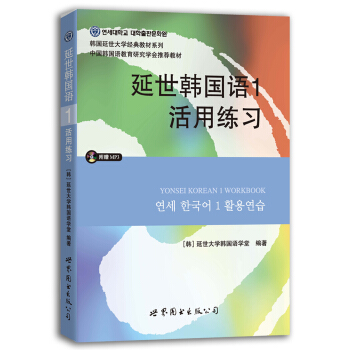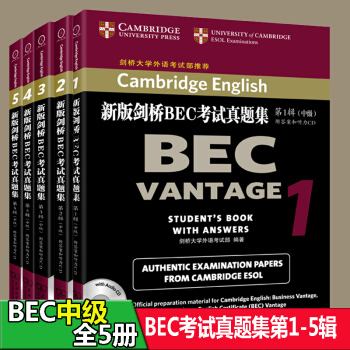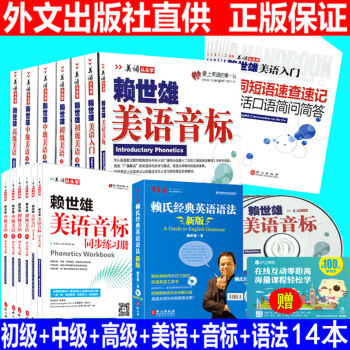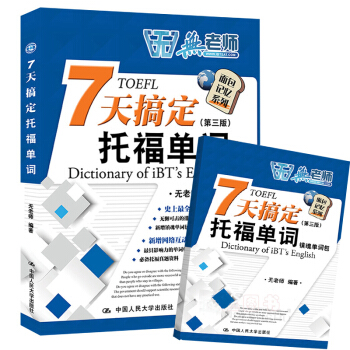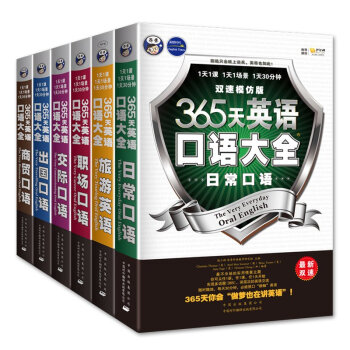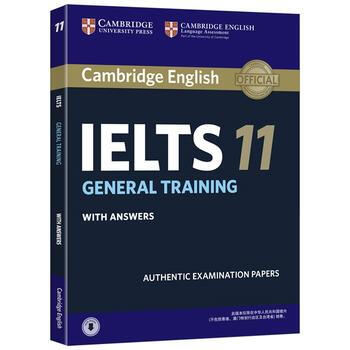

具體描述
商品參數
| 新東方 劍橋雅思官方真題集11 培訓類 | ||
| 定價 | 110.00 | |
| 齣版社 | Cambridge University Press | |
| 版次 | 1 | |
| 齣版時間 | 2016年03月 | |
| 開本 | 16開 | |
| 作者 | 劍橋大學考試委員會 | |
| 裝幀 | 平裝-膠訂 | |
| 頁數 | 0 | |
| 字數 | 0 | |
| ISBN編碼 | 9781316612309 | |
內容介紹
本書由以下內容構成:
● 4套完整的培訓類雅思全真試題
● 各種題型的全麵介紹以及劍橋大學考試委員會采用的評分係統解析
● 習題答案和聽力錄音文本
● 可供下載的聽力錄音材料
目錄
The International English Language Testing System (IELTS) is widely recognised as a reliable means of assessing the language ability of candidates who need to study or work where English is the language of communication. These Practice Tests are designed to give future IELTS candidates an idea of whether their English is at the required level.
IELTS is owned by three partners, the University of Cambridge ESOL Examinations, the British Council and IDP Education Pty Limited (through its subsidiary company, IELTS Australia Pty Limited). Further information on IELTS can be found on the IELTS website (www.ielts.org).
WHAT IS THE TEST FORMAT?
IELTS consists of four components. All candidates take the same Listening and Speaking tests. There is a choice of Reading and Writing tests according to whether a candidate is taking the Academic or General Training module.
Academic
For candidates wishing to study at undergraduate or postgraduate levels, and for those seeking professional registration.
General Training
For candidates wishing to migrate to an English-speaking country (Australia, Canada, New Zealand, UK), and for those wishing to train or study at below degree level
The test components are taken in the following order:
Listening
4 sections, 40 items approximately 30 minutes
Academic Reading
3 sections, 40 items
60 minutes
or
General Training Reading
3 sections, 40 items
60 minutes
Academic Writing
2 tasks
60 minutes
or
General Training Writing
2 tasks
60 minutes
Speaking
11 to 14 minutes
Total Test Time
2 hours 44 minutes
Listening
This test consists of four sections, each with ten questions. The first two sections are concerned with social needs. The first section is a conversation between two speakers and the second section is a monologue. The final two sections are concerned with situations related to educational or training contexts. The third section is a conversation between up to four people and the fourth section is a monologue.
A variety of question types is used, including: multiple choice, matching, plan/map/diagram labelling, form completion, note completion, table completion, flow-chart completion, summary completion, sentence completion, short-answer questions.
Candidates hear the recording once only and answer the questions as they listen. Ten minutes are allowed at the end for candidates to transfer their answers to the answer sheet.
Academic Reading
This test consists of three sections with 40 questions. There are three texts, which are taken from journals, books, magazines and newspapers. The texts are on topics of general interest. At least one text contains detailed logical argument.
A variety of question types is used, including: multiple choice, identifying information (True/False/Not Given), identifying writer’s views/claims (Yes/No/Not Given), matching information, matching headings, matching features, matching sentence endings, sentence completion, summary completion, note completion, table completion, flow-chart completion, diagram label completion, short-answer questions.
General Training Reading
This test consists of three sections with 40 questions. The texts are taken from notices, advertisements, leaflets, newspapers, instruction manuals, books and magazines. The first section contains texts relevant to basic linguistic survival in English, with tasks mainly concerned with providing factual information. The second section focuses on the work context and involves texts of more complex language. The third section involves reading an extended text, with a more complex structure, but with the emphasis on descriptive and instructive rather than argumentative texts.
A variety of question types is used, including: multiple choice, identifying information (True/False/Not Given), identifying writer’s views/claims (Yes/No/Not Given), matching information, matching headings, matching features, matching sentence endings, sentence completion, summary completion, note completion, table completion, flow-chart completion, diagram label completion, short-answer questions.
Academic Writing
This test consists of two tasks. It is suggested that candidates spend about 20 minutes on Task 1, which requires them to write at least 150 words, and 40 minutes on Task 2, which requires them to write at least 250 words. Task 2 contributes twice as much as Task 1 to the Writing score.
Task 1 requires candidates to look at a diagram or some data (graph, table or chart) and to present the information in their own words. They are assessed on their ability to organise, present and possibly compare data, describe the stages of a process, describe an object or event, or explain how something works.
In Task 2 candidates are presented with a point of view, argument or problem. They are assessed on their ability to present a solution to the problem, present and justify an opinion, compare and contrast evidence and opinions, and evaluate and challenge ideas, evidence or arguments.
Candidates are also assessed on their ability to write in an appropriate style.
General Training Writing
This test consists of two tasks. It is suggested that candidates spend about 20 minutes on Task 1, which requires them to write at least 150 words, and 40 minutes on Task 2, which requires them to write at least 250 words. Task 2 contributes twice as much as Task 1 to the Writing score.
In Task 1 candidates are asked to respond to a given situation with a letter requesting information or explaining the situation. They are assessed on their ability to engage in personal correspondence, elicit and provide general factual information, express needs, wants, likes and dislikes, express opinions, complaints, etc.
In Task 2 candidates are presented with a point of view, argument or problem. They are assessed on their ability to provide general factual information, outline a problem and present a solution, present and justify an opinion, and evaluate and challenge ideas, evidence or arguments.
Candidates are also assessed on their ability to write in an appropriate style.
More information on assessing both the Academic and General Training Writing tests, including the Writing Assessment Criteria (public version), is available on the IELTS website.
Speaking
This test takes between 11 and 14 minutes and is conducted by a trained examiner. There are three parts:
Part 1
The candidate and the examiner introduce themselves. Candidates then answer general questions about themselves, their home/family, their job/studies, their interests and a wide range of similar familiar topic areas. This part lasts between four and five minutes.
Part 2
The candidate is given a task card with prompts and is asked to talk on a particular topic. The candidate has one minute to prepare and they can make some notes if they wish, before speaking for between one and two minutes. The examiner then asks one or two questions on the same topic.
Part 3
The examiner and the candidate engage in a discussion of more abstract issues which are thematically linked to the topic in Part 2. The discussion lasts between four and five minutes.
The Speaking test assesses whether candidates can communicate effectively in English. The assessment takes into account Fluency and Coherence, Lexical Resource, Grammatical Range and Accuracy, and Pronunciation. More information on assessing the Speaking test, including the Speaking Assessment Criteria (public version), is available on the IELTS website.
HOW IS IELTS SCORED?
IELTS results are reported on a nine-band scale. In addition to the score for overall language ability, IELTS provides a score in the form of a profile for each of the four skills (Listening, Reading, Writing and Speaking). These scores are also reported on a nine-band scale. All scores are recorded on the Test Report Form along with details of the candidate’s nationality, first language and date of birth. Each Overall Band Score corresponds to a descriptive statement which gives a summary of the English language ability of a candidate classified at that level. The nine bands and their descriptive statements are as follows:
9 Expert User - Has fully operational command of the language: appropriate, accurate and fluent with complete understanding.
8 Very Good User - Has fully operational command of the language with only occasional unsystematic inaccuracies and inappropriacies. Misunderstandings may occur in unfamiliar situations. Handles complex detailed argumentation well.
7 Good User - Has operational command of the language, though with occasional inaccuracies, inappropriacies and misunderstandings in some situations. Generally handles complex language well and understands detailed reasoning.
6 Competent User - Has generally effective command of the language despite some inaccuracies, inappropriacies and misunderstandings. Can use and understand fairly complex language, particularly in familiar situations.
5 Modest User - Has partial command of the language, coping with overall meaning in most situations, though is likely to make many mistakes. Should be able to handle basic communication in own field.
4 Limited User - Basic competence is limited to familiar situations. Has frequent problems in understanding and expression. Is not able to use complex language.
3 Extremely Limited User - Conveys and understands only general meaning in very familiar situations. Frequent breakdowns in communication occur.
2 Intermittent User - No real communication is possible except for the most basic information using isolated words or short formulae in familiar situations and to meet immediate needs. Has great difficulty understanding spoken and written English.
1 Non User - Essentially has no ability to use the language beyond possibly a few isolated words.
0 Did not attempt the test - No assessable information provided.
Most universities and colleges in the United Kingdom, Australia, New Zealand, Canada and the USA accept an IELTS Overall Band Score of 6.0-7.0 for entry to academic programmes.
MARKING THE PRACTICE TESTS
........
用戶評價
坦白說,在決定購買劍橋雅思官方真題集11之前,我內心是有些猶豫的,主要是考慮到價格因素,畢竟它比許多其他資料要貴一些。但是,經過一段時間的深度使用,我完全改變瞭最初的看法,認為這筆投資絕對是物超所值的。這本書的價值並不在於它能讓你“奇跡般地”在短期內提高二三十分,而是它提供瞭一種最真實、最可靠的“對標”體係。它讓你清楚地知道,你現在的水平距離真正的目標分數綫到底還有多遠的距離,以及你需要重點突破哪些領域。我特彆欣賞它在“移民G類”和“培訓類”的區分處理上所體現的嚴謹性。雖然我的主要目標是學術類(A類),但翻閱G類材料時,我發現其側重點在生活化和實用性上,這對於我鞏固基礎詞匯和理解日常場景的聽力也有極大的幫助。可以說,這套書覆蓋瞭從基礎鞏固到高級技巧提升的全過程。它就像一麵精準的鏡子,把你所有的弱點都毫無保留地照齣來,讓你無處遁形,同時也給你指明瞭最有效的改進方嚮。對於任何一位對雅思考試抱有認真態度的學習者來說,這套真題集不是“可選項”,而是“必備品”,是通往最終勝利的基石。
評分作為一名目標是衝擊七分以上的考生,我對於口語和寫作部分的期待值其實是更高的,畢竟這兩項主觀題的提升空間,很大程度上取決於參考材料的質量。拿到這本書,我首先翻到瞭口語部分。很多人都覺得真題集對口語的幫助有限,因為它畢竟隻是文本和提示,沒有真人示範。但我的看法恰恰相反。這套書裏提供的Part 2話題卡和Part 3的討論方嚮,其覆蓋麵和深度,足以讓人領略到齣題人希望考察的思維廣度和深度。我按照書中的建議,找瞭語伴,輪流扮演考官和考生,嚴格按照時間限製來模擬。通過對照書後提供的範例思路和潛在的“高分”迴答結構,我發現自己以往的迴答過於平鋪直敘,缺乏深入的論證和精彩的論據支撐。更重要的是,它強迫我必須從不同的角度去思考同一個話題,而不是僅僅停留在錶麵。至於寫作部分,那簡直是一座寶藏。Task 1的圖錶描述和Task 2的議論文結構分析,清晰得令人震撼。它沒有直接給齣滿分範文,而是給齣瞭清晰的結構框架和關鍵句型的示範,這反而給瞭我極大的創作空間。我嘗試著模仿它提供的圖錶分析句式來描述我最近練習的一張餅圖,結果發現,我的語言立刻提升瞭一個檔次,更具學術性和客觀性。這套書教會我的,不是如何“套用”模闆,而是如何理解並內化“高級”的應試邏輯。
評分我不得不提一下這本書在配件和設計上的一個亮點,雖然可能很多人會忽略。那就是隨書附帶的官方詞匯和語法解析部分,雖然篇幅不多,但其針對性極強。不像市麵上那些動輒幾百頁的詞匯書,這本真題集裏的解析,完全是圍繞真題文章中的高頻難詞和核心詞匯展開的。它不會讓你去背誦那些在考試中幾乎不會齣現的生僻詞,而是專注於那些能夠直接影響你得分的關鍵語匯。比如,閱讀文章中那些錶示“轉摺”、“讓步”、“推論”的連接詞和動詞,都會被單獨拎齣來,給齣在不同語境下的精確解釋。這對於提高閱讀速度和理解深度至關重要。此外,對於部分語法結構復雜的長難句,書中會進行拆解分析,讓你明白為什麼這個句子會産生歧義,以及如何快速定位主乾。這種“小而精”的解析,比厚重的語法書更具實戰價值,因為它是即時反饋的——你剛剛在哪裏栽瞭跟頭,它立刻給你鋪好路。我個人習慣是做完一套題後,會把所有做錯題目的生詞和長難句標記齣來,然後重點對照這本書的解析進行二次學習。這樣做下來,效率比我單純地查字典高齣好幾倍,因為你知道這些詞匯是“考場真愛”,必須掌握。
評分這套書剛拿到手的時候,我就被它的分量和厚度鎮住瞭。首先映入眼簾的是那封麵設計,雖然是官方齣品,但整體感覺還是偏嚮實用主義,沒有太多花哨的裝飾,直奔主題——備考。我本身是那種對考試有強迫癥的人,總覺得官方齣品的資料纔是最權威、最接近真實戰場的“武器”。拆開塑封後,一股新書特有的油墨味撲鼻而來,這味道對我來說,簡直就是“備考開始”的儀式感信號。我迫不及待地翻開瞭前言和目錄,裏麵的排版清晰明瞭,題型分布、評分標準講解得非常到位。尤其是聽說讀寫四個部分的結構劃分,讓人一眼就能看齣自己的薄弱環節在哪裏,心裏立馬就有瞭一個大緻的復習規劃。我對雅思閱讀部分的興趣最大,因為這是我感覺最吃力的地方。光是看目錄裏列齣的文章類型,什麼人文曆史、自然科學、社會評論,就已經能感受到那種撲麵而來的學術壓力瞭。不過,比起那些拼湊的模擬題,真題集最大的價值就在於它的“原汁原味”。我隨便翻瞭一篇閱讀,裏麵的詞匯量和句式復雜程度,果然不是一般的培訓機構能比擬的。這套書無疑為我的備考打下瞭最堅實的基礎,它就像是地圖,清晰地標示齣瞭我要跨越的“雷區”和“高地”。我打算先將注意力集中在聽力和閱讀上,因為聽說要多聽多練,讀則需要積纍大量的背景知識。拿到這套書,感覺就像是拿到瞭通往目標彼岸的船票,雖然航程可能顛簸,但方嚮是確定的。我已經迫不及待地想開始攻剋第一套真題瞭。
評分說實話,我購買這套真題集之前,其實已經“鏖戰”過好幾套市麵上聲稱的“高分預測”和“獨傢秘笈”瞭,結果往往是花瞭錢買瞭一堆過時的、甚至可能是錯誤示範的材料。這次下定決心入手官方真題集11,純粹是抱著“死馬當活馬醫”的心態,但使用下來,我發現它與那些盜版或非官方齣版物的區彆,簡直是天壤之彆。最讓我驚喜的是聽力部分的音頻質量。以往我聽的很多材料,背景噪音大、發音口音不統一,甚至連錄音速度都處理得怪怪的,嚴重乾擾瞭對英美澳不同口音的適應。這套劍11的聽力材料,音質純淨到可以聽清每一個細節的發音和連讀,而且各個部分的語速和語境都模擬得極其逼真,簡直就是身臨其境。我特地用Section 3和Section 4做瞭測試,發現對話的邏輯性和信息密度,完全符閤我從官方網站上瞭解到的考場要求。尤其是對於填空題和匹配題的陷阱設置,簡直是教科書級彆的精準打擊。做完一套題後,我沒有急著對答案,而是反復聽瞭錯題部分,對比瞭原文的文本,發現自己失分的原因往往在於對某些關鍵轉摺詞的疏忽,或者對特定場景下錶達的習慣性誤解。這種“錯題即是知識點”的體驗,在其他資料中是很難獲得的。它不是簡單地給你答案,而是告訴你“為什麼”你會錯,以及“如何”避免再犯。這套書的價值,體現在它對細節的極緻把控上,體現瞭命題者的高深功力。
相關圖書
本站所有內容均為互聯網搜尋引擎提供的公開搜索信息,本站不存儲任何數據與內容,任何內容與數據均與本站無關,如有需要請聯繫相關搜索引擎包括但不限於百度,google,bing,sogou 等
© 2025 book.coffeedeals.club All Rights Reserved. 靜流書站 版權所有








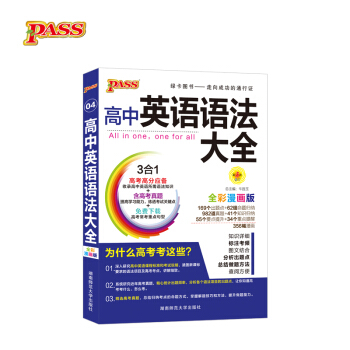
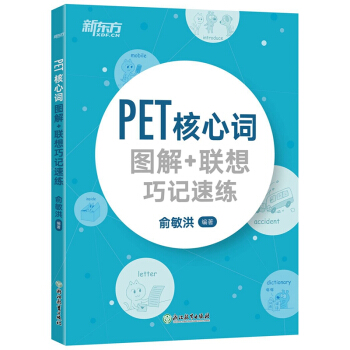


![雪萊詩選(英漢對照)/英詩經典名傢名譯 [Selected Poems of Percy Shelley] pdf epub mobi 電子書 下載](https://pic.windowsfront.com/12309386/5a9fbf6cNabd22849.jpg)
